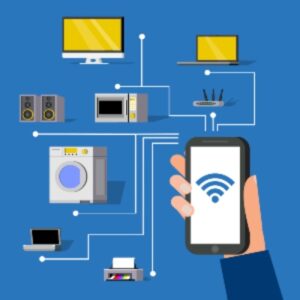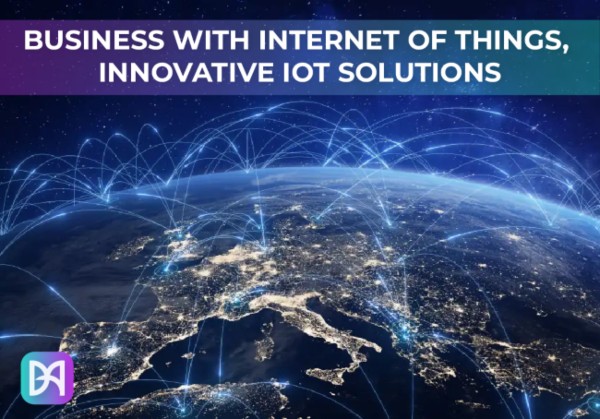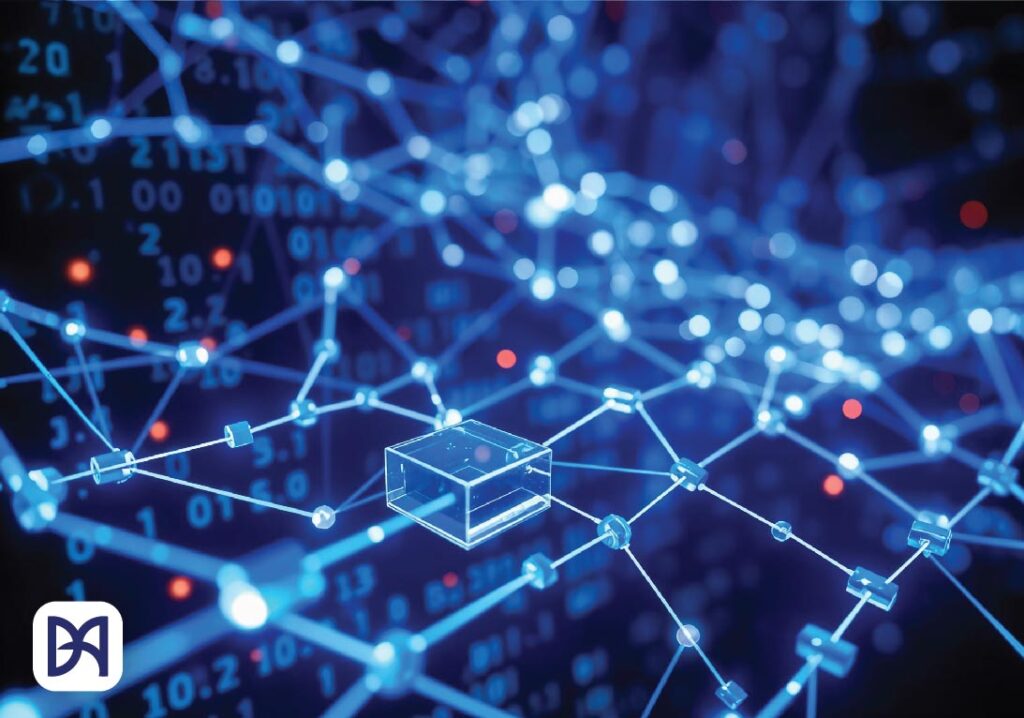Internet of Things entails the integration of physical objects with sensors, software, and network interfaces for data exchange. Connected subjects include household equipment, smart home thermostats, security cameras, industrial equipment, and automobiles.
IoT Device Management connects devices to interact and perform operations independently within a network of internet-enabled objects. The main purpose of IoT is to build intelligent objects that can inform their owners and other objects about their condition.
Table of Contents
ToggleHow Does IOT Device Management Work?
A typical Internet of Things Technology system consists of three main components: 
- Smart devices: IoT electronics collect environment, user, and usage information for Internet transmission.
- IoT application: Many Internet of Things (IoT) applications obtain information from devices for ML or AI processing. The decisions are provided to IoT devices for their use.
- Graphical user interface: IoT devices or fleets can be registered and managed remotely via a web-based dashboard similar to a mobile app.
IoT devices communicate via various protocols to connect with each other and the cloud. Sensors convert real-world parameters into signals handled by devices.
- Device Addressing: This is a way of identifying the location of a device in the network to enable communication.
Types of Internet of Things Devices
Internet of Things devices can be categorized into three main types:
- Consumer IoT: Internet-connected wearables harvest wearer data.
- Industrial Internet of Things: Industrial smart devices consist of factory-use appliances and energy-controlling equipment.
- Commercial IoT: Business and healthcare organizations include tools for data collection, storage, and data display and an insight into the organization’s consumers.
IoT Device Management
Appropriate care to the Internet of Things Technology devices is one of the important success factors for the Internet of Things solutions. Key aspects of Internet of things Devices management include:
- Device connectivity: There are software and cloud service layers in IoT that control connectivity.
- One can divide it into the following layers:
- Device identification: IUIDs draw the relative position of the device to the other ones, and that position is necessary to establish the communication. Some examples include Internet Protocol (IP) addresses, string numbers, string alphanumeric & etc.
- Device security: As often, the security of the Internet of Things Devices is crucial to avoid the attacks of hackers and the leakage of data. Some of the measures that should be put in place include; encryption, authentication, and secure firmware updates.
- Device monitoring: It is very essential to timely respond to such concerns as this impacts the performance and overall health of IoT devices.
- Device updates: The IoT devices require updates periodically on security, bugs, and functions on the electronic products.
Industrial Internet of Things (IIoT)
Industrial Internet of Things is the implementation of Internet of Things technology in the manufacturing sector, energy, transport, healthcare, and others. The Industrial Internet of Things is all about trying to help organizations generate more total revenue while spending less, by leveraging connectivity and data analysis of connected devices.
- Key applications of Industrial Internet of Things include: Key applications of Industrial Internet of Things include:
- Predictive maintenance: Smart sensors and analytics help organizations predict equipment failures and avoid unscheduled maintenance.
- Asset tracking: Implementing real-time tracking for assets addresses infrastructure, inventory, and logistics challenges efficiently.
- Process optimization: Using multiple sensors optimizes processes for desired efficiency and quality.
- Worker safety: Using wear and vision systems to assess worker risk factors and alert the workers of potential risks faced at the workplace.
- Energy management: Monitoring of energy consumption of energy-using plants and utilities in industrial buildings and estates to manage energy wastage.
Benefits of Internet of Things
IoT offers numerous benefits across various industries, including IoT offers numerous benefits across various industries, including:
- Improved efficiency and productivity: First of all, the IoT can lead to an optimization of the processes and thus to an increase of efficiency and productivity as well as to cost reduction and higher revenues.
- Enhanced decision-making: These offer huge amounts of information about consumers, markets, and operations and enable organizations to make better decisions.
- Reduced manual processes: IoT can minimize those that are redundant to give more time to those that require more input from the people.
- Improved customer experience: In similar ways, IoT enables organizations to deliver quality services, timely support, and foresee some kind of system failures.
- Increased sustainability: On the move, IoT leads to the enhancement of energy sustainability by providing methods to cut job energy waste across industries.
Challenges and Considerations
Benefits of IoT exist, but challenges must be addressed:
- Security and privacy: Unauthorized access to IoT devices and data must be prevented for enhanced security. Robust security features like data encryption, user authentication, and firmware updates are crucial.
- Interoperability: Suddenly connecting numerous IoT devices from different manufacturers is nearly impossible because of the lack of standard protocols.
- Data management: In other words, the number of bytes that can flow from massive IoT devices needs to be managed, stored, and analyzed. This requires measures and support in appropriately managing the various data.
- Edge computing: Edge computing boosts response time and resource efficiency by shifting computation nearer to devices, sparking interest.
- Talent shortage: Organizations face challenges in finding skilled workers for IoT due to a shortage of experienced personnel in this field.
Future of Internet of Things Technology
In general, there are still many innovative ideas and trends expected to be revealed and realized in the context of IoT. With more IoT devices in use, organizations must prepare for new technologies and applications. It will, therefore, let those who will be in a position to benefit from this revolutionizing technology to do so.
Some of the important occurrences and phenomena related to Internet of Things Technology future are as follows:
- Increased adoption of AI and machine learning: IoT devices generate vast data, analyzed using AI/ML for decision-making.
- Advancements in edge computing: More efficient devices that serve IoT purposes will progress edge computing.
- Emergence of 5G and low-power wide-area networks: Advancements in IoT device connectivity via 5G and LPWAN are expanding application possibilities.
Conclusion
The Internet of Things Technology changes global connectivity, operation, and applicability at a never-before-seen rate. The main benefits of IoT include; IoT is to connect devices to share certain information, with advantages in the different disciplines.
To fully utilize IoT, address security, compatibility, and data management challenges. Business people should continuously update themselves on IoT changes to stay informed and relevant. With proper support, IoT can help companies explore new opportunities for prosperity.




